Ralph Miller’s Dodge Diplomat Flexes Mopar® Muscle on a Budget
The odds are good that if you are reading this, you would love to own a classic Dodge Challenger, Charger, Coronet, Super Bee or Dart with a monster V8 – preferably a HEMI® engine – but the current cost of those popular models is just too high in today’s market. Most clean A-, B- or E-body Dodge muscle cars have been sought-after collectibles, which has led to sky-high market values, even when they are in relatively rough shape. That high price is an especially significant issue for someone who is trying to build a Mopar® vehicle to go racing on a budget, but many people forget that there are many classic rear-drive Mopar vehicles that can benefit from many of the same aftermarket upgrades as the more popular, more expensive models.
Classic Chrysler chassis platforms like the M-, F- and J-bodies all offered two-door options, allowing owners to enjoy the Mopar muscle car feel, but in stock form, models like the Diplomat, Mirada, Aspen and the others on these platforms suffered from a lack of power due to being introduced during the “smog era”. However, the drivetrain upgrades that will make a classic Challenger or Charger faster can also benefit these smog era cars, and the factory V8 smog era cars can easily have their engines swapped out with other, more powerful Mopar engines, allowing many M-, F- and J-body owners to add a ton more muscle to their classic Mopar vehicle.
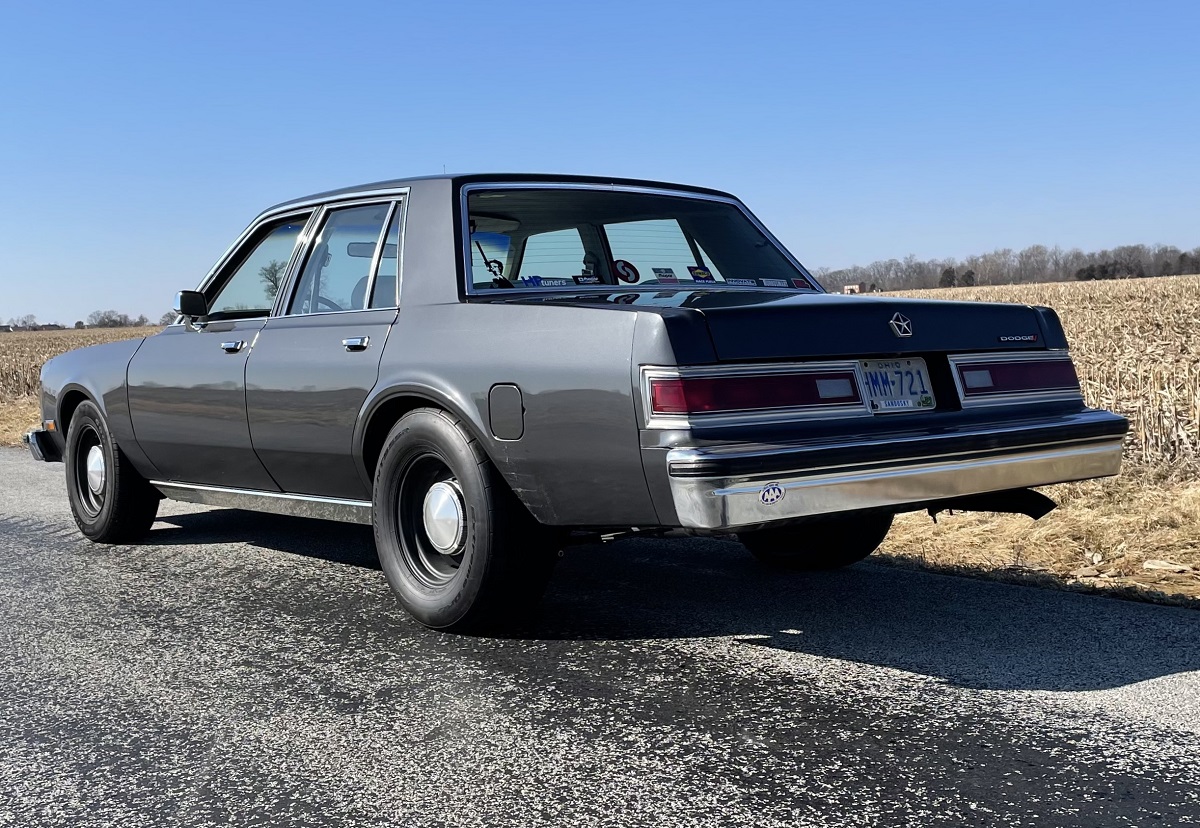
I am one of those people who got into the Brotherhood of Muscle with a non-traditional model, having grown up driving and racing a 1983 Dodge Mirada with a lightly modified 340-cubic-inch V8 from a Plymouth Barracuda. Ralph Miller is another, but he took a very different route in building his 1984 Dodge Diplomat, using a modern Dodge Ram engine and an inexpensive turbo kit to propel his M-body into the 12-second range.
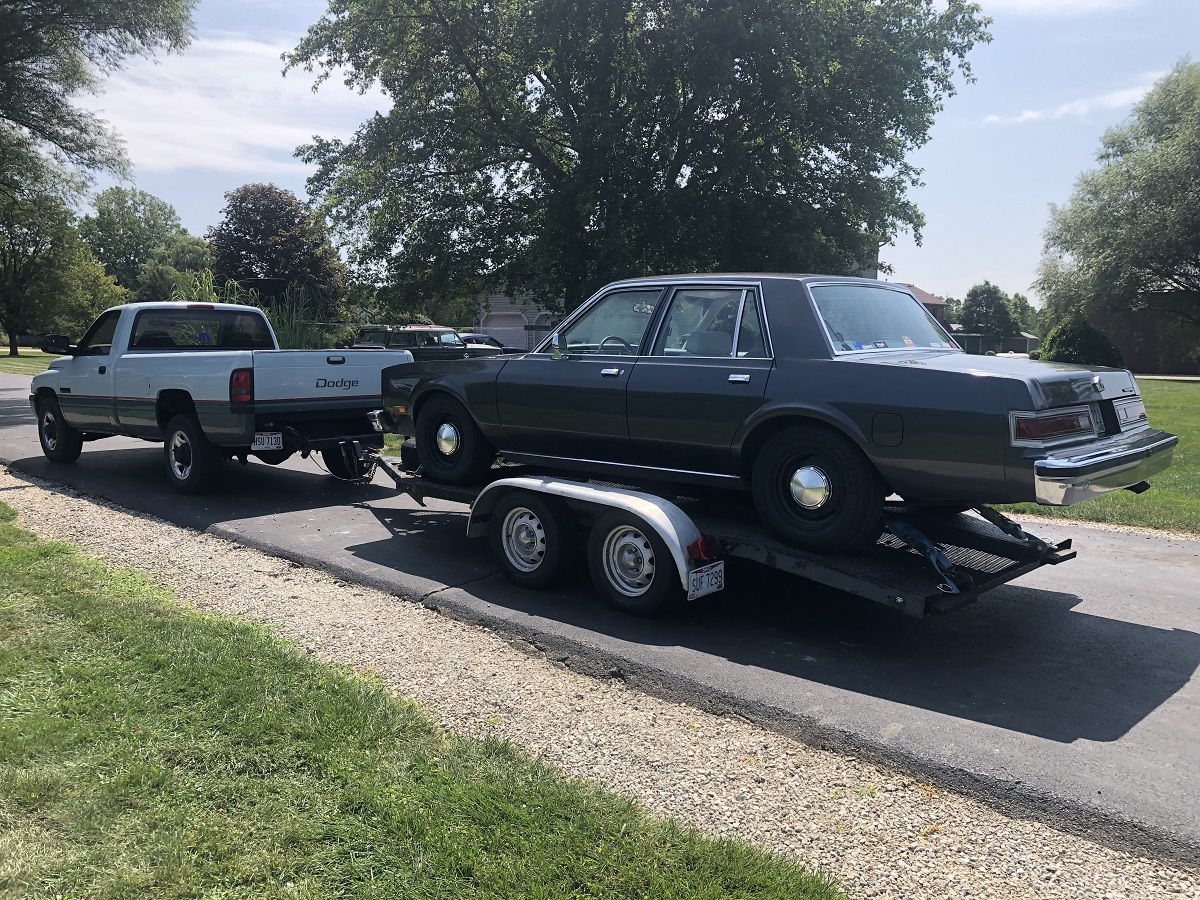
Best of all, Miller uses this Dodge Diplomat to teach the next generation of gearheads via his role as a Mopar CAP (Career Automotive Program) professor at Sinclair Community College in Dayton, Ohio.
A Turbocharged V8 Diplomat?
When I first met Ralph Miller online, it was in the Mopar M, J, F, R, Y & B Body Fans Facebook group, where he posted pictures of his 1984 Dodge Diplomat at the drag strip. It is relatively rare to see a Diplomat at the track, but what caught my attention was that his Dodge M-body was powered by a turbocharged V8. At the time, he was running in the 13.30s with a 5.2-liter Magnum V8 from a Dodge Ram 1500, with the only upgrades to the engine being the eBay GT45 turbo kit. He used the factory truck exhaust manifolds flipped to face the front of the car to feed the turbocharger and he upgraded the fuel system, but other than that, the engine was stock. He chose the 5.2 Magnum because he knew that he would be able to tune it himself using the stock engine controller and HPTuners software, and although he knew that the stock 5.2 may not stand up to the boost for very long, that initial engine was just about getting the turbo build up and running. As Miller puts it, the first build was a “proof of concept”, and in running 13.30s, he proved that the concept would work.
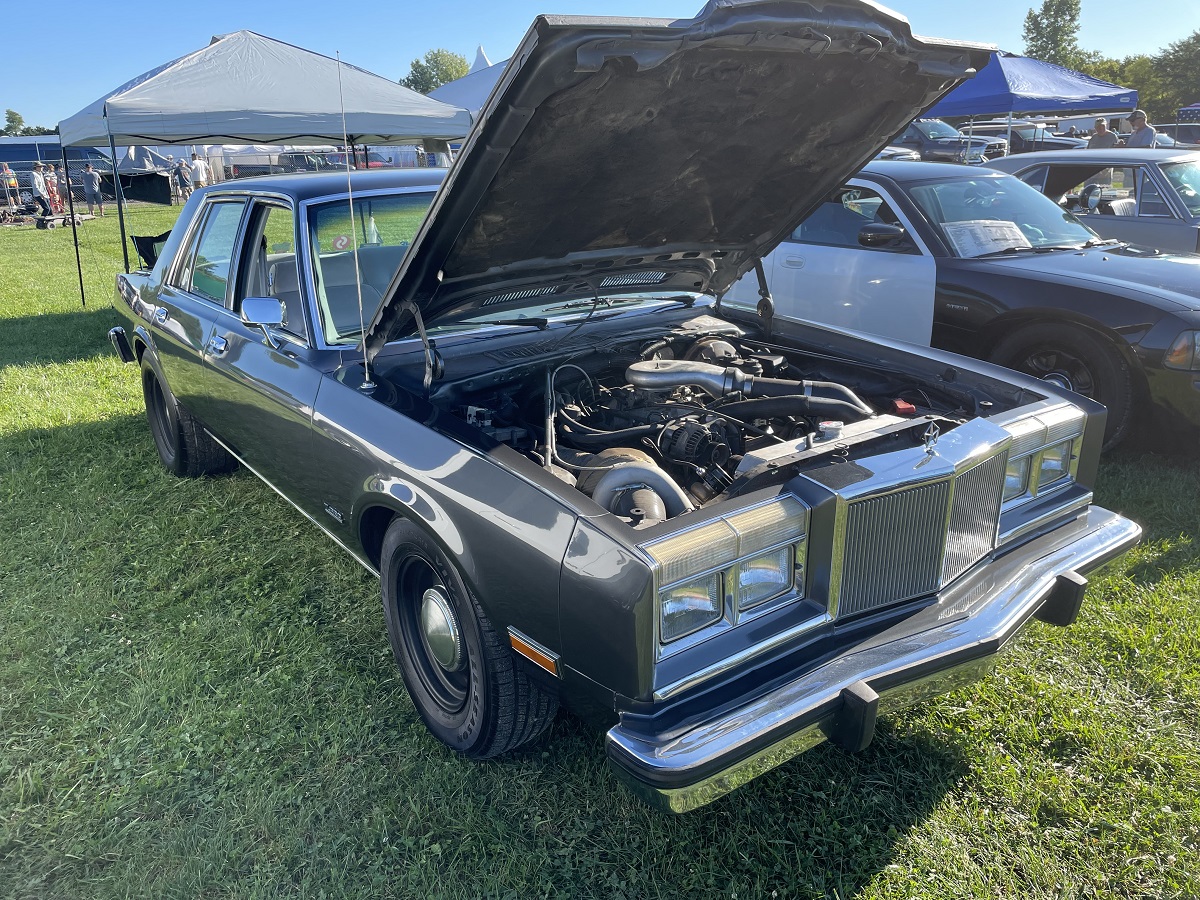
Unfortunately, as Miller expected, the boost shortened the life of that first Magnum V8, but it didn’t mean it was the end of the racing days for this 1984 Dodge Diplomat. In fact, this clean M-body is storming back to action with more power, but before getting into that, we want to take a look at how this unique turbocharged Diplomat came to be.
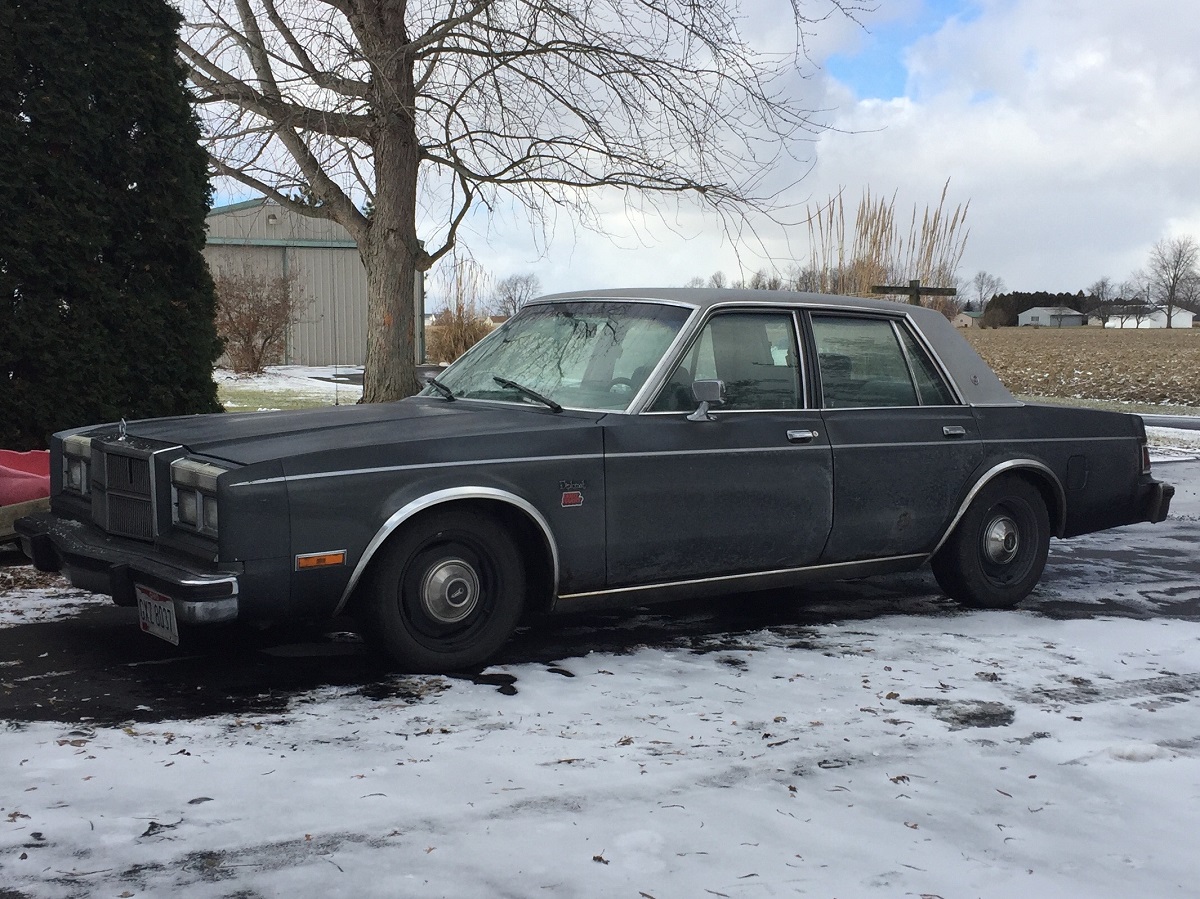
The Family Daily
The 1984 Dodge Diplomat shown here was originally purchased new by Ralph Miller’s aunt and during the course or normal daily driving, it was involved in a few small accidents that led to some paint work in the early years (above). Miller’s uncle became the second owner when he inherited the car, nicknaming the Diplomat “Dirty Harry” and installing a trailer hitch to pull his 22-foot boat. Towing duty eventually hurt the transmission, at which point the car was parked for a few years until he gave it to one of Ralph Miller’s cousins – who used it for a winter beater for a few years after installing a fresh 904 transmission.
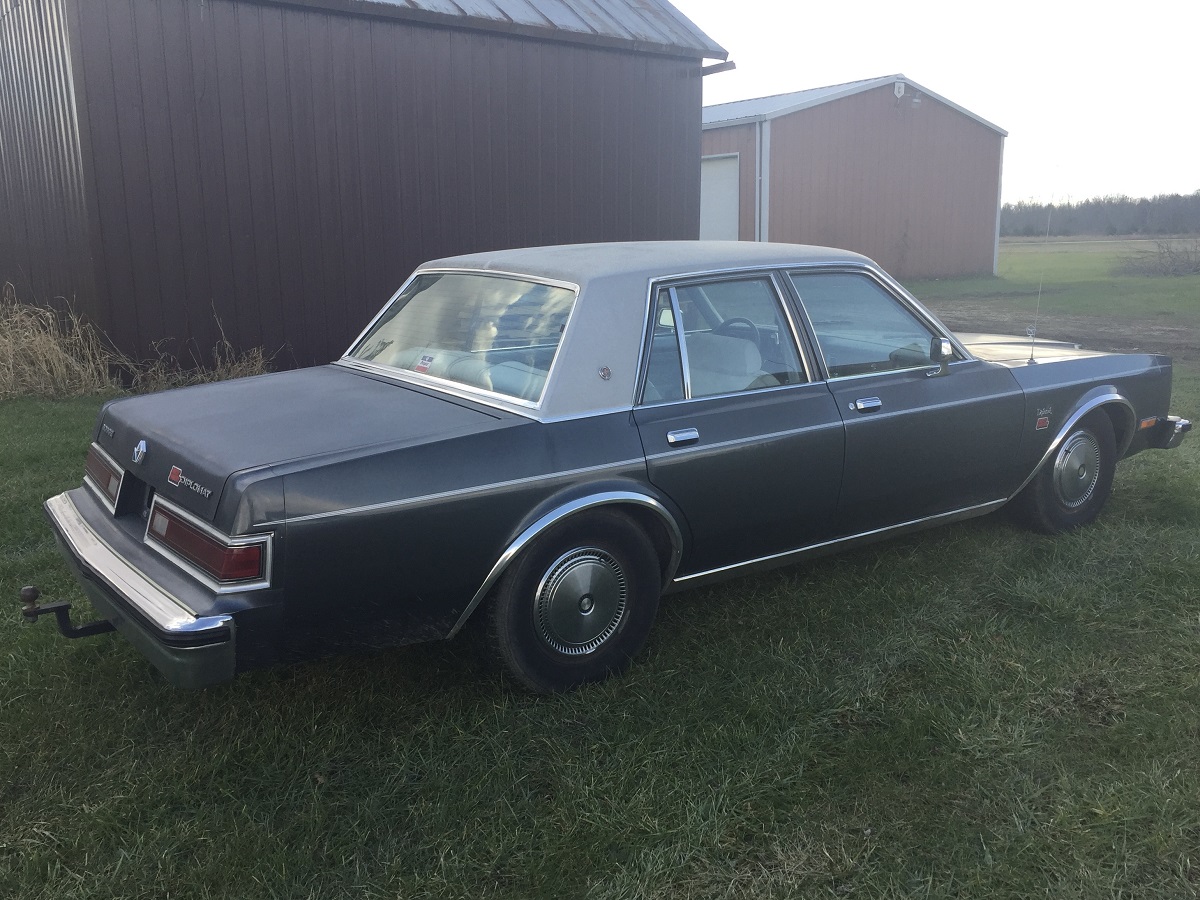
When he moved on to a different winter car, that cousin sold the Diplomat the Miller for $250. He then drove the car through a few winters before deciding to restore and build the car. While this 1984 Dodge Diplomat spent many years as a daily driver in rough winter weather, each of the owners before Miller took care of the car and kept it clean, so there is minimal rust and no real body damage.

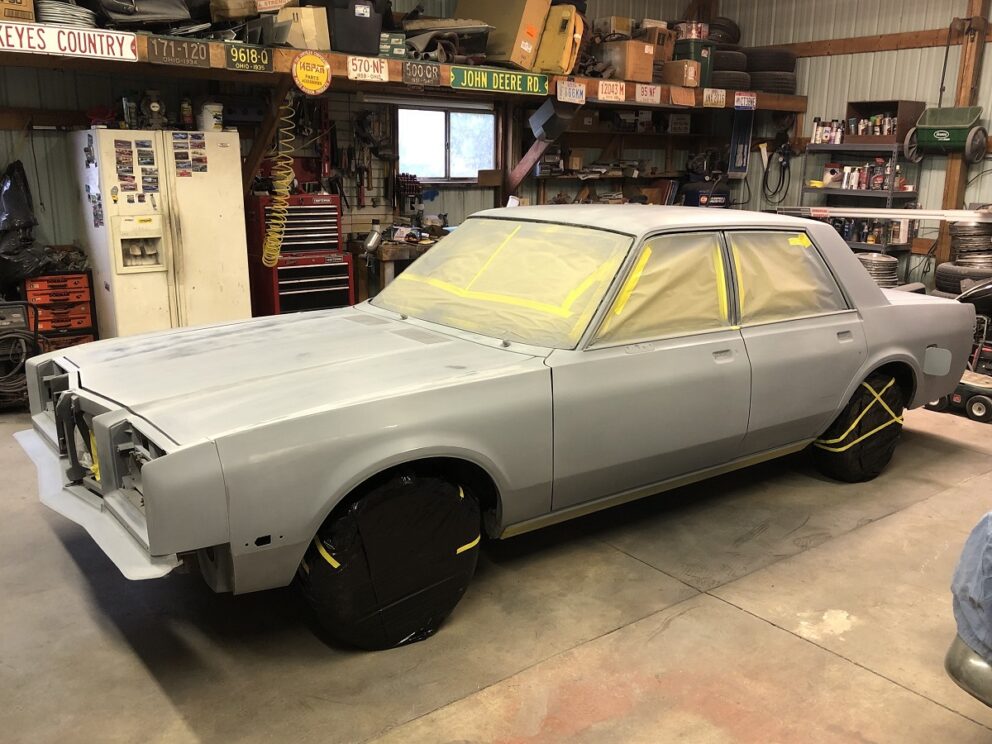
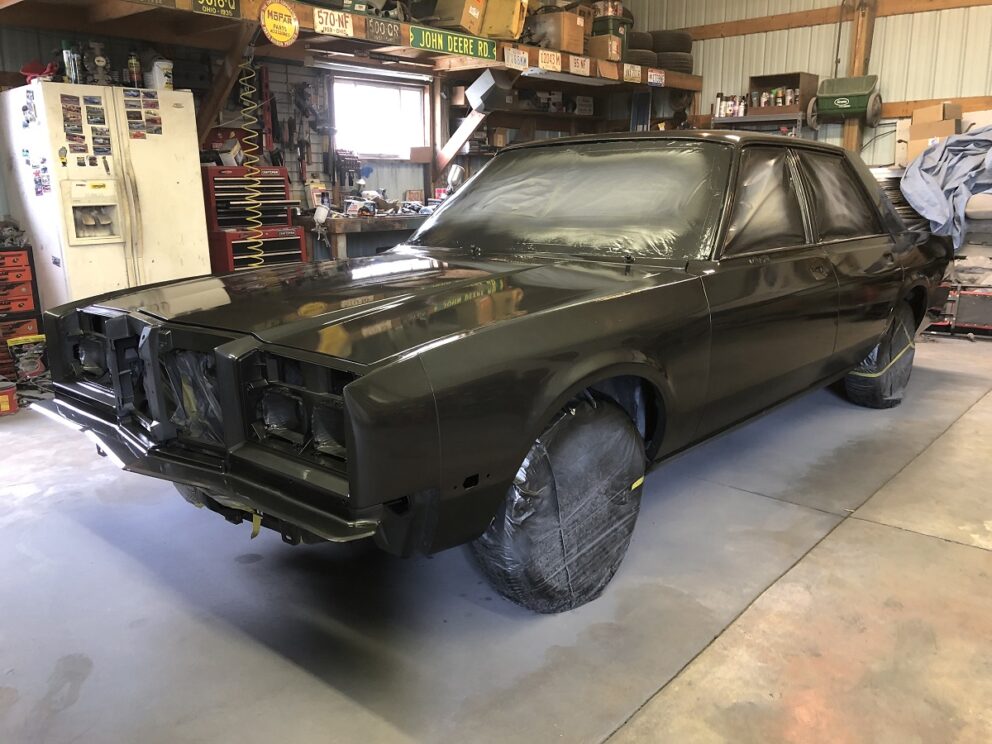
Ralph Miller performed what he calls a “mild restoration” in his polebarn, which included replacing the front fenders and a rear door from cleaner parts he found in a junkyard, removing the vinyl top and wheel trim and a full repaint. As you can see in the images here, that mild restoration led to a very nice 1984 Dodge Diplomat.
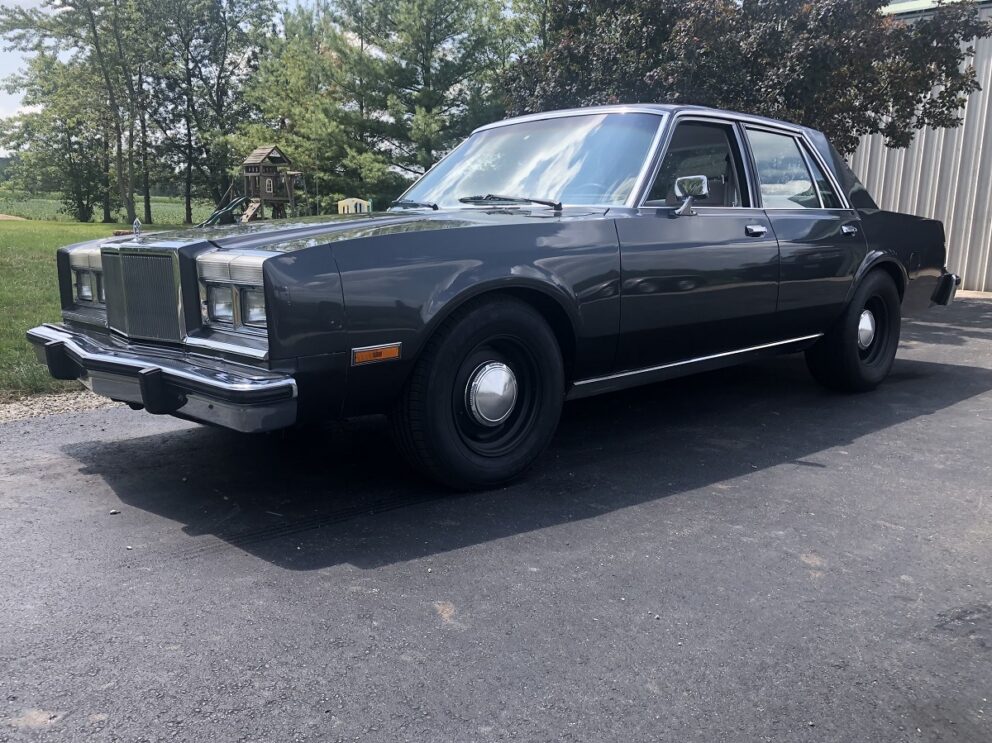
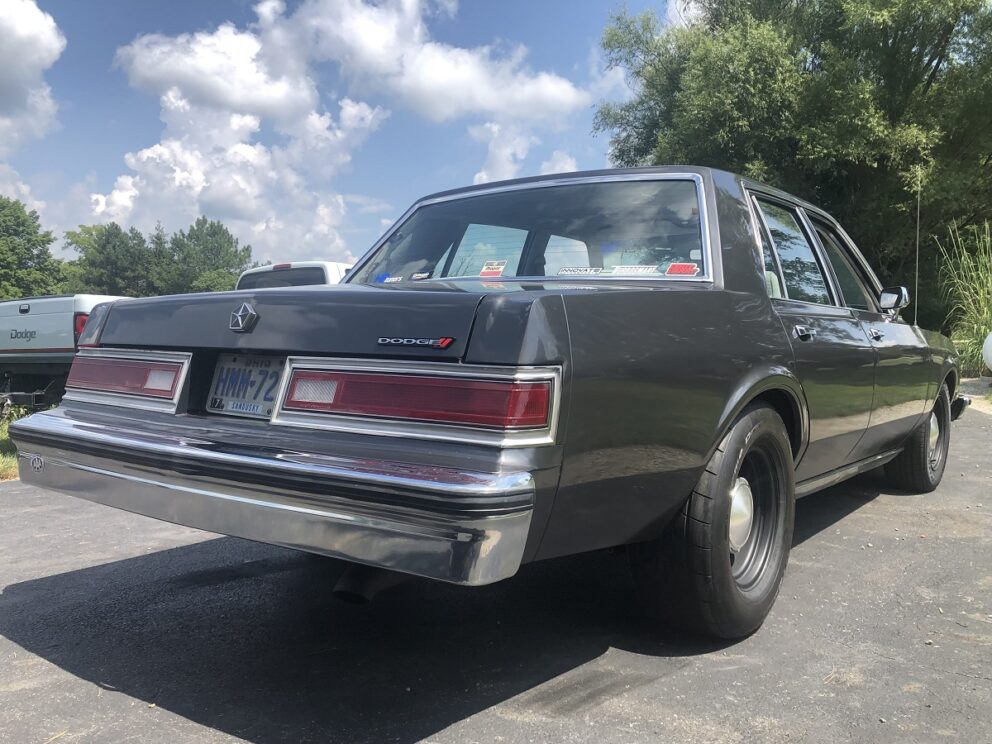
Turbocharged Magnum Power
Once Ralph Miller had the exterior of his 1984 Dodge Diplomat looking great, he turned his attention to the drivetrain.
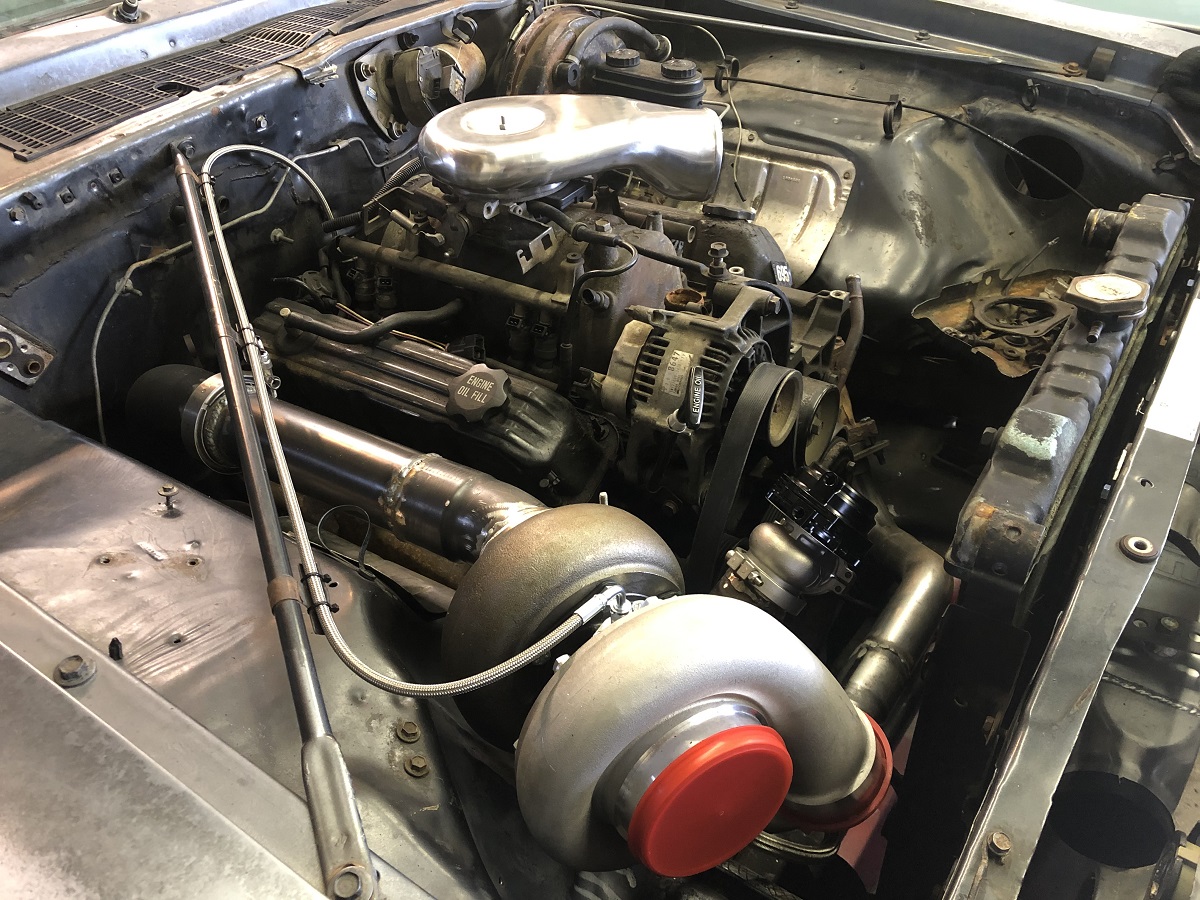
“The original 318 was well maintained and ran great, but one core plug between the engine and transmission started leaking, and so one of them had to come out. I had been kicking around the idea of a what-if Diplomat GLH and this gave me the excuse to try it. I had decided to do the project and got the turbo about two weeks before COVID hit, so I then had plenty of time to myself and nobody to tell me it was a bad idea! I also threw new core plugs in the original 318 and it’s in my dad’s ’77 Ramcharger now,” said Miller. “I wanted to turbocharge it from the start, so I decided on Magnum 5.2 or 5.9 platform so I could tune the original ‘90s JETC EFI system with HPTuners.”
As mentioned above, Miller began with a Magnum 5.2-liter V8 fitted with a GT45 turbocharger and mated to a 727 transmission with a stock convertor that he took out of another car in his fleet. The power then travels to the ground by means of a stock driveshaft, a set of spooled 3.91 gears and 275-60-15 Nitto drag radials on 15×8 steel wheels.
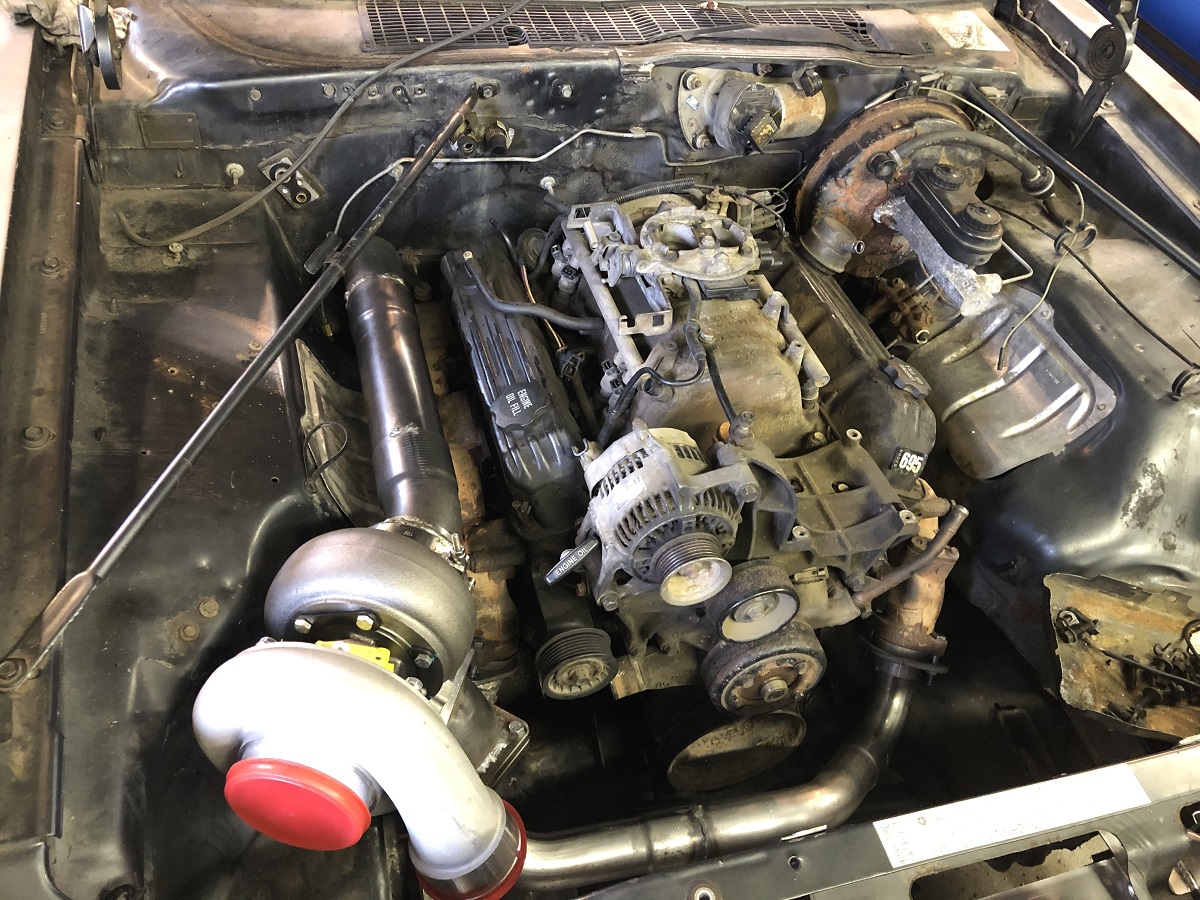
“When I built the turbo setup, I used a universal air-to-air intercooler mounted behind the grille. I retrofitted the fuel tank with a Walbro 535lph pump and am using an Aeromotive boost referenced pressure regulator. That regulator cost more than the turbo, that hurt! When turning the manifolds backward, I had to convert to manual steering for the steering gear to clear. I had an extra one on the shelf left over from the Dart project. I’m using an Innovate wideband to tune mounted in the dash, and the exhaust is a single 3” from the turbo to the rear bumper that I built with a $30 chambered muffler. Integrating a junkyard ’97 Dodge Ram harness and PCM into the original Diplomat harness is something else that I did, I had done plenty of similar EFI swaps before so that went smoothly.”
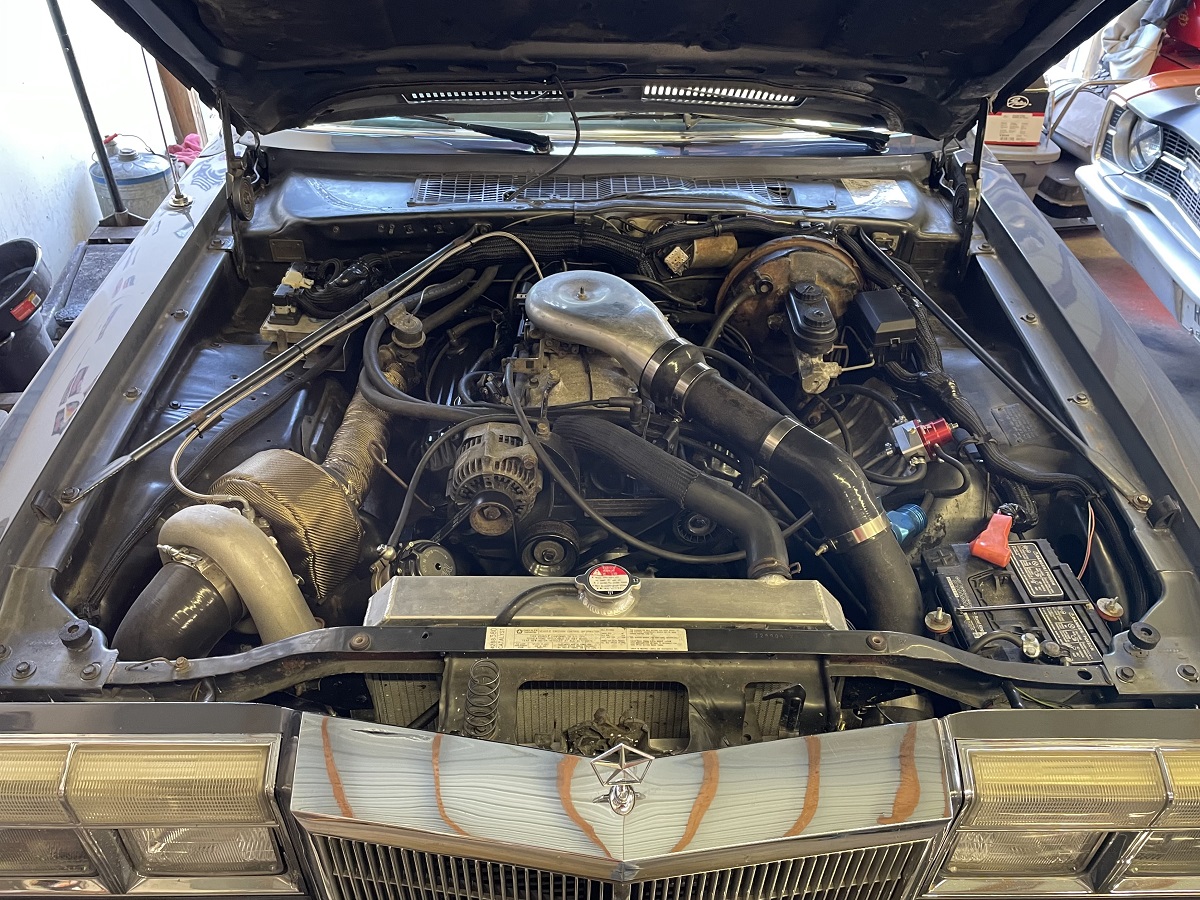
That setup allowed Ralph Miller’s 1984 Dodge Diplomat to run a best time of 13.34 at 107 miles per hour on 8 pounds of boost, but since running that time, the car has gone through some significant changes. After the 5.2 broke, he began building a Magnum 5.9-liter V8. The engine is nearly stock, with the exception of rings that have been gapped for boost, so Miller will be able to run a touch more boost. His 2-bar map sensor setup allows him to run up to 15 pounds of boost, but to try to protect the stock pistons of the 5.9, he plans to stick to 10 pounds of boost pressure. However, in going from the 5.2 to the 5.9 and adding extra boost, this Diplomat should be making quite a bit more power going forward.
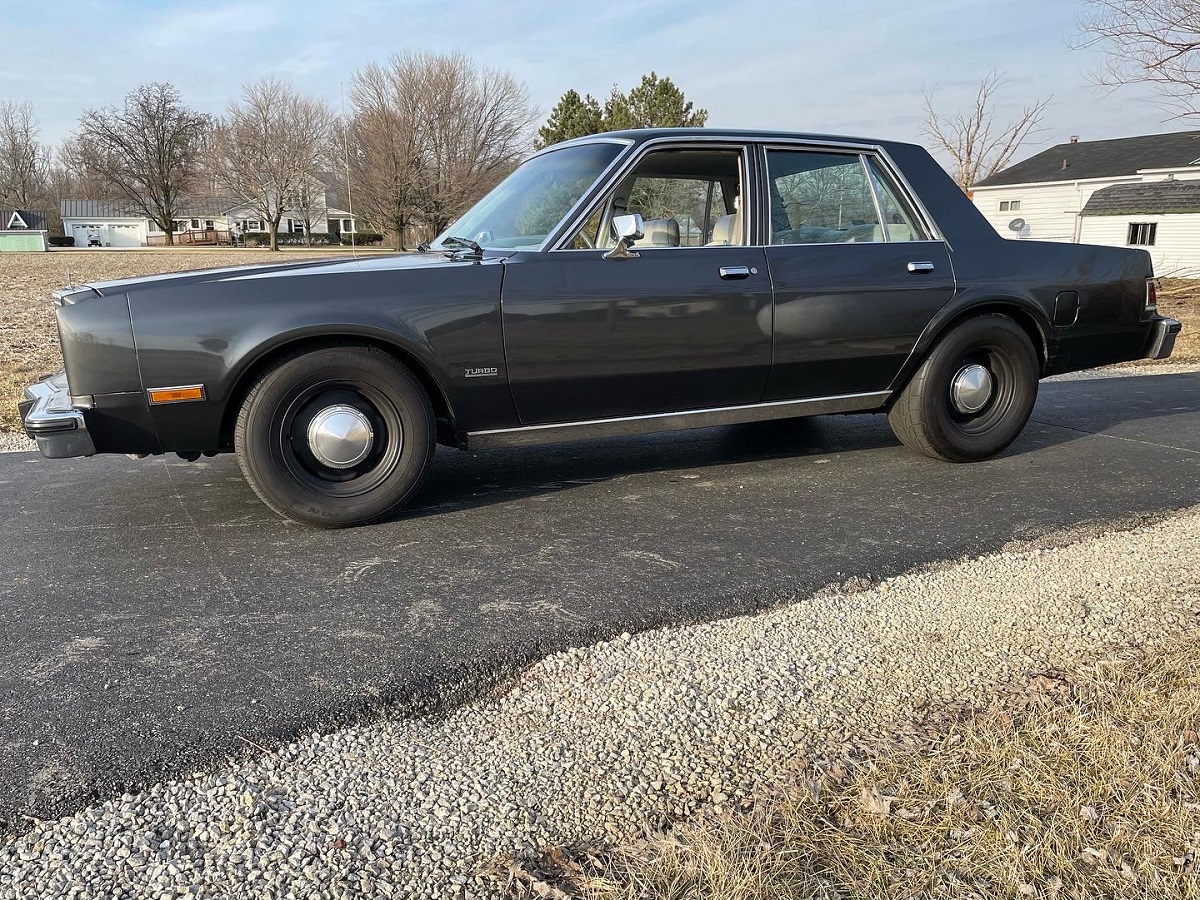
In addition to the larger engine and the added boost, Miller has swapped to 4.10 gears and a 2500 stall convertor. Between the extra power, the extra gear and the added launch RPM, there is a good chance that this 1984 Dodge Diplomat will be running in the 12-second range once the current build is complete.
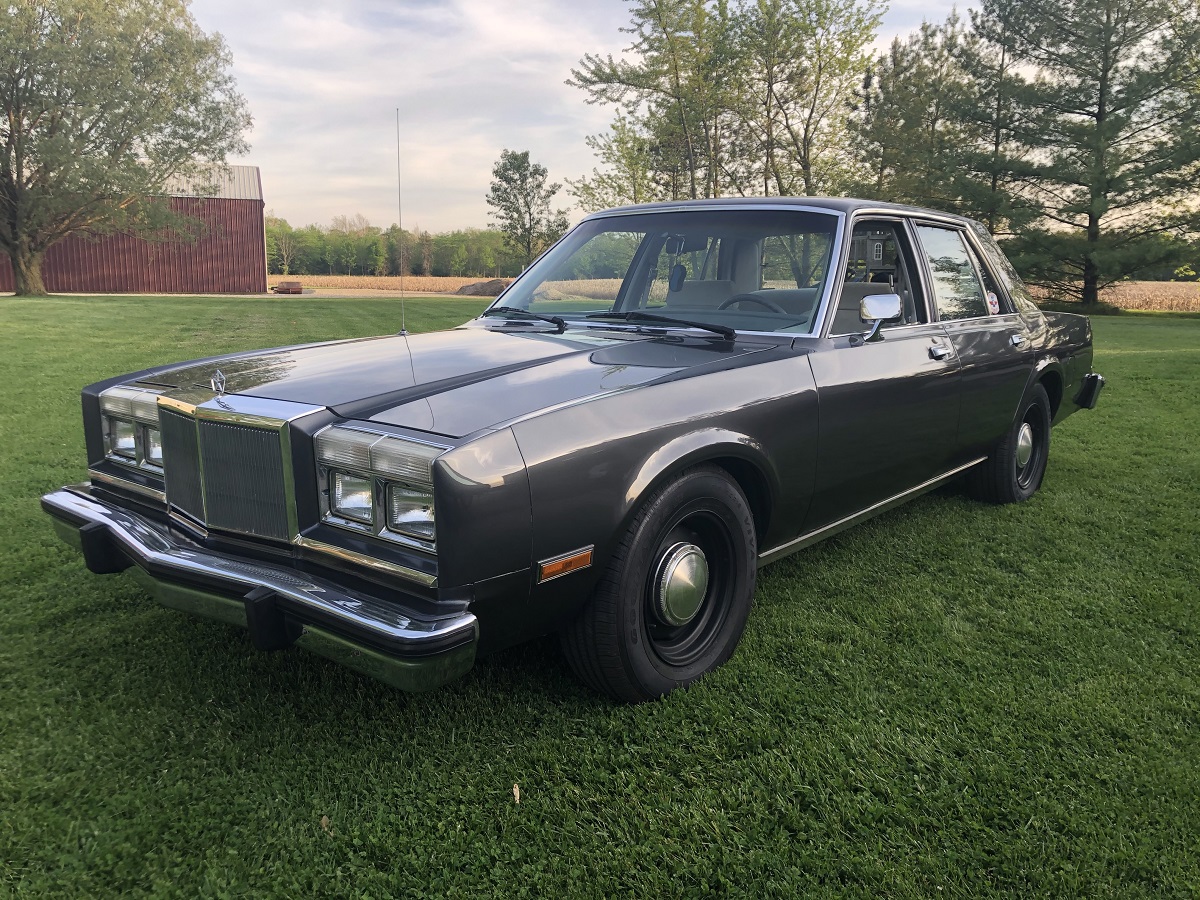
“I think that the most surprising thing about the Diplomat is the amount of attention it gets wherever I take it, everyone seems to love it. I think that it is unique, but also relatable, and its definitely an attainable vehicle for someone who is looking to build a car. The sleeper vibe is something that I enjoy the most. My goal going into the car was modern HEMI-power for magnum swap money, and I think I attained that. I would like to thank my dad, cousin and colleagues at school for always trading parts and ideas for my crazy builds, and my wife for putting up with my shenanigans!”
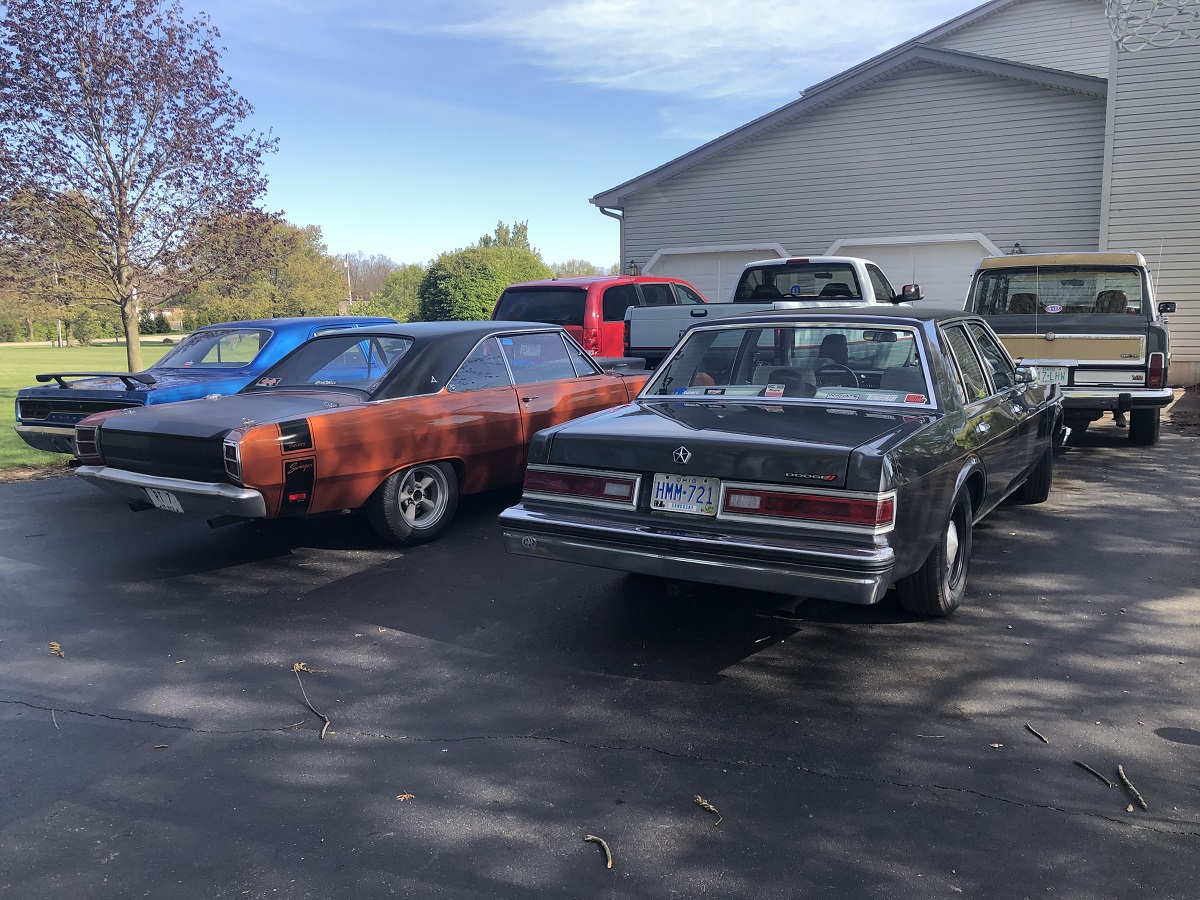
Aside from the mechanical upgrades and the restoration, Miller has left the car original, shy of some 1980s K-car Turbo badges on the fenders and a modern Dodge badge on the trunk. On the inside, he has installed a tachometer in the factory gauge cluster (in place of the factory gas gauge) and he built a cover for his fire extinguisher that looks like a tissue box.
An Educational Tool
Ralph Miller’s Dodge Diplomat is a cool project that shows the potential for creating a fun-to-drive classic Mopar muscle car without spending big money, but it is also used as an educational tool. As mentioned above, Miller is a professor in the automotive department at Sinclair Community College, where he participates in Mopar CAP. He provided some information about the school, his role there and how his Diplomat has been involve in the curriculum.
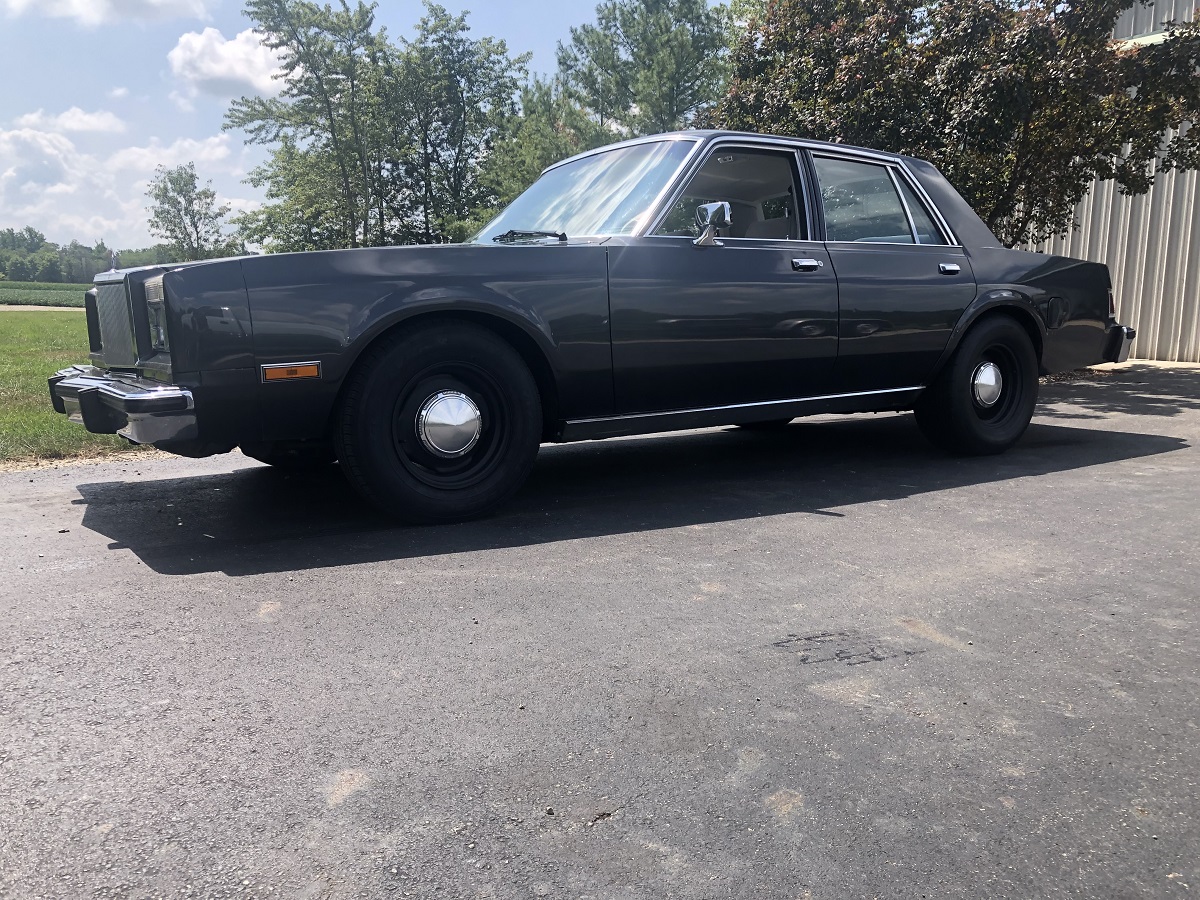
“We have Mopar CAP, Honda PACT, GM ASEP programs, as well as a general automotive repair associate degree and certificate programs. I teach different classes for all of the programs in the department, but obviously have a soft spot for Mopar CAP, being a Mopar guy all of my life. Our programs have classes like engine mechanical, brakes, HVAC, automatic and manual trans, electrical 1&2 and drivability 1&2. I teach engine mechanical, HVAC and electrical 2 for CAP and then engines, HVAC and brakes for other programs. We also offer a high-performance engine rebuilding class where students rebuild their own engines and are trained on all of the machining equipment.
I’m teaching a Mopar CAP engine mechanical class right now and in addition to taking apart, inspecting and reassembling donated engines from Chrysler, they are tearing down [my 5.2] and inspecting the block and crank. They have already measured the cylinders and found them to be out of round, and the rings do have irregular wear on them. They also found the connecting rod bearings are very worn at the top from the increased cylinder pressure on them (or maybe the long mystery life the engine had before).
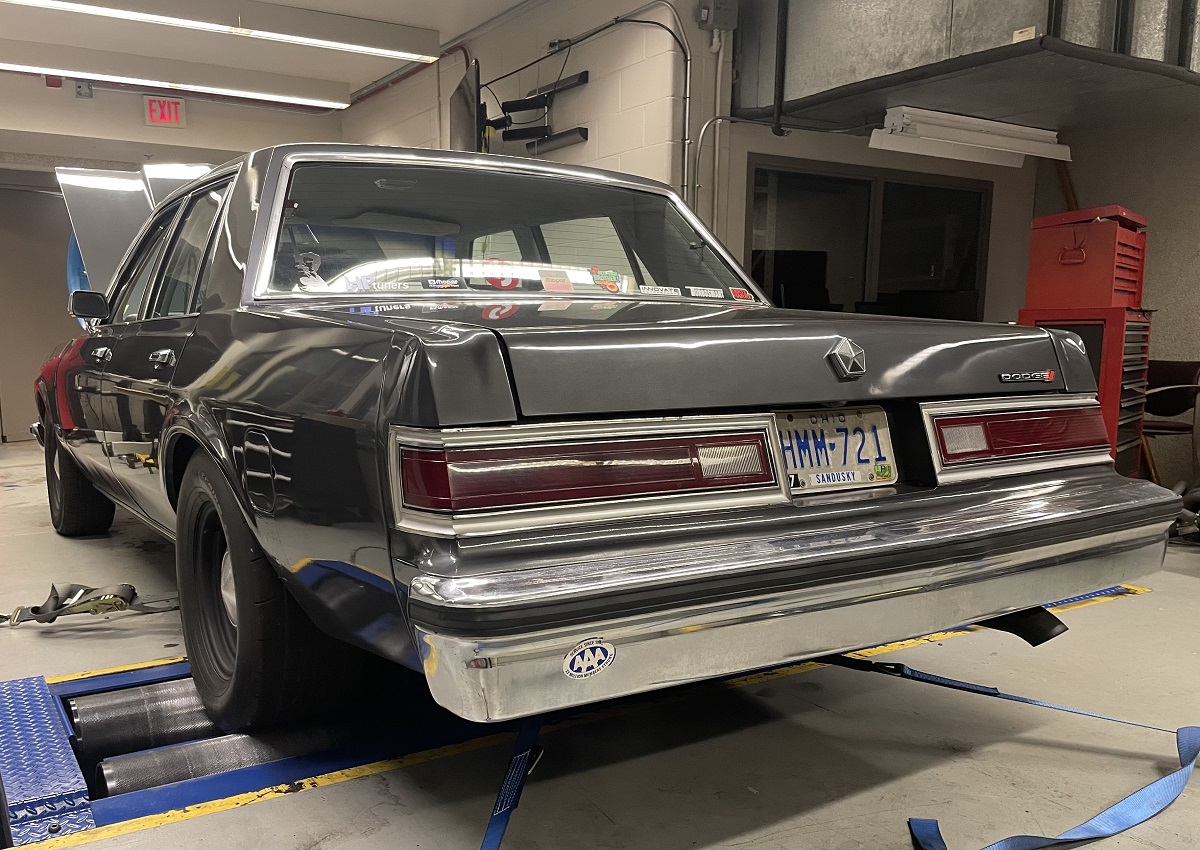
We will use the car on the dyno for some pulls to show how timing and air fuel ratio on the wideband affect horsepower and drivability [with the new 5.9L engine]. It usually helps to have multiple projects going on to keep the students interested and relate what they’re learning to real failures in the field.”
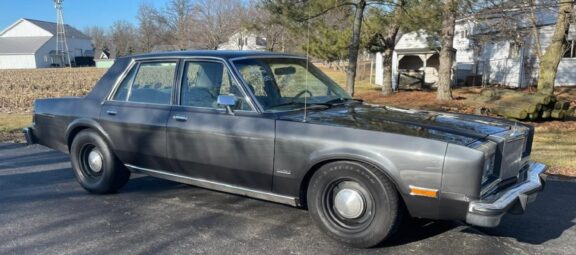
0 Comments